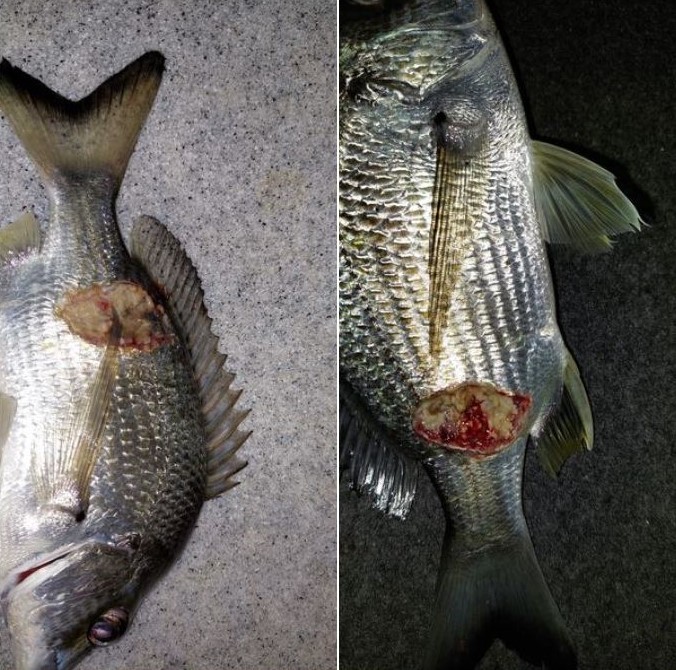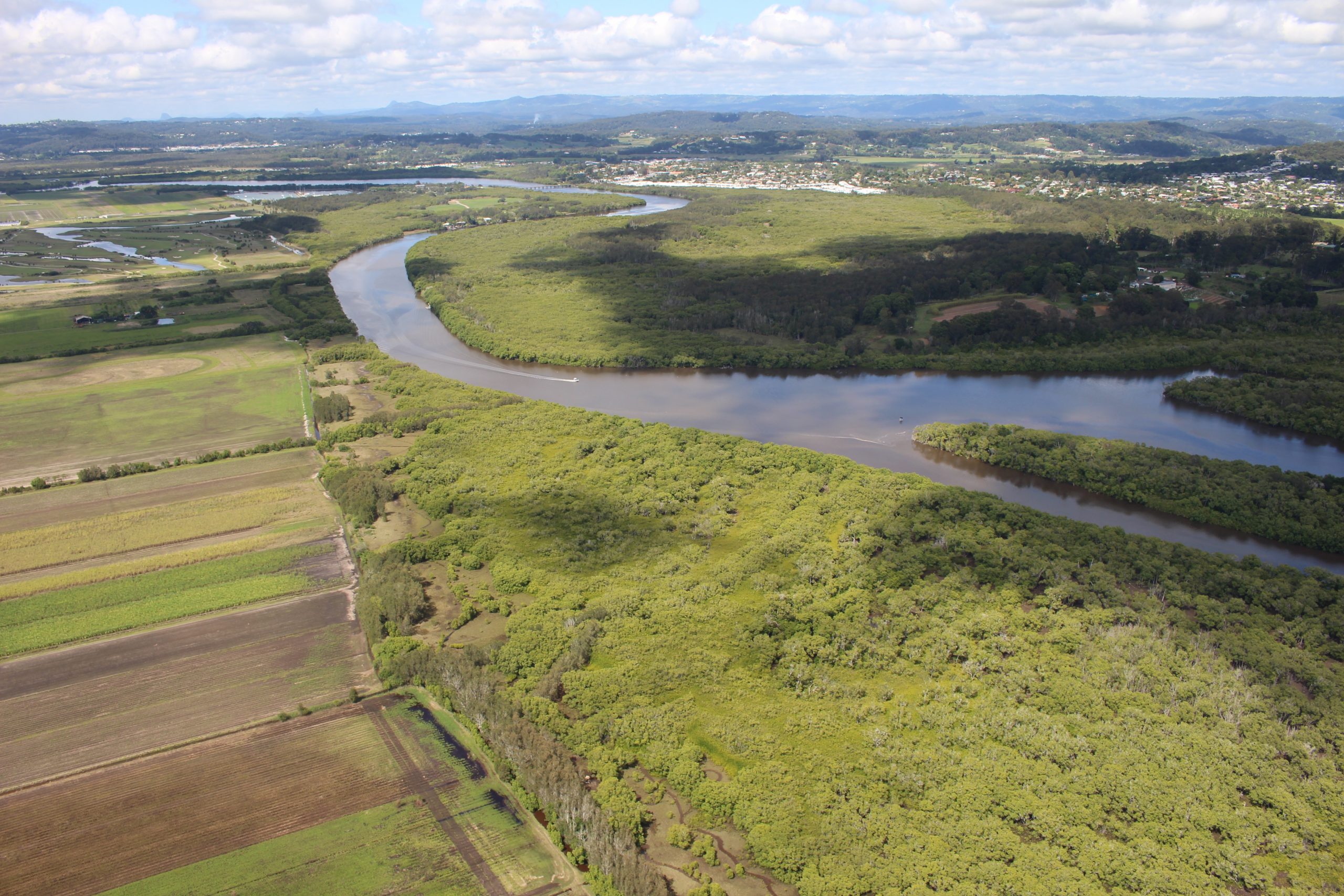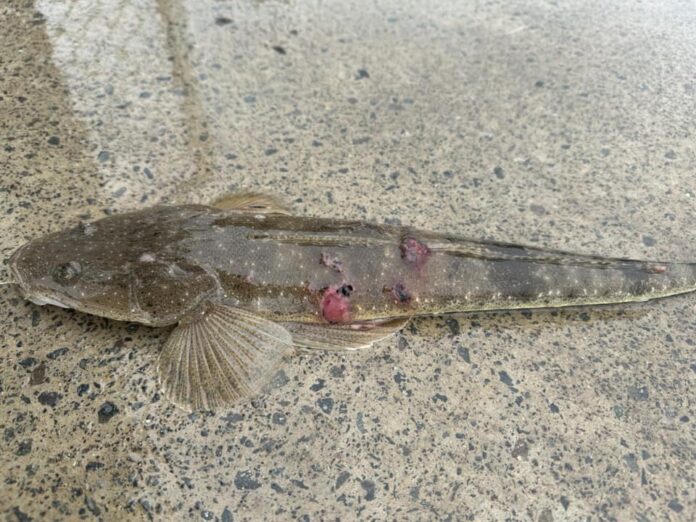Sunshine Coast anglers have observed fish in local rivers suffering from a disease that causes ugly red ulcers, following recent heavy rain.
Epizootic ulcerative syndrome (EUS), also known as red spot disease, is caused by a fungus that can flourish especially after acid sulphate soil runoff enters waterways.
The fungus can then infect fish with damaged skin, attacking the muscle beneath and causing the unsightly red sores.
Experts say the disease is common and does not pose a risk to people, or to recreational or commercial fishing.
More than 100 freshwater and estuarine species in Australia are susceptible to the disease, including bread-and-butter species such as bream and flathead.
Several local fishers have posted to a popular fishing page on social media in the past few weeks about seeing fish suffering from the disease.
“Caught this poor bugger (in the) Noosa River over the weekend, released him but was in bad shape,” Steve Ozoux said.
Tony Richings wrote: “Couple (of) bream caught in the Bli Bli reach of Maroochy River last night, ulcers look pretty bad. Fish went back to hopefully fight another day.”

And another posted: “So many sick fish in the Maroochy River right now. We are picking up bream and flathead alive out of the water with our bare hands with sores on them.”
A spokesperson for the Department of Agriculture and Fisheries said it did not know of an increase in cases but acknowledged the disease was prevalent in waterways.
“The department is not aware of a spike in epizootic ulcerative syndrome (EUS) cases. This disease is endemic in Queensland and all other mainland Australian states as well as the Northern Territory,” they said.
“EUS often appears after periods of heavy rainfall and acid water runoff. It can cause unsightly reddish lesions.
“EUS is caused by a water fungus (Aphanomyces invadans). It’s common in coastal rivers and catchments.”
Do you have an opinion to share? Submit a Letter to the Editor at Sunshine Coast News via news@sunshinecoastnews.com.au. You must include your name and suburb.
Aquatic animal health expert Dr Ben Diggles, who provides specialist advice to industry and government through his DigsFish Services, told Sunshine Coast News the disease was introduced to Australia.
“It was originally found in Japan in the early 1970s and Australia got it soon after,” he said, adding that it probably spread via ballast water used in shipping.
“It spread from Japan and Australia throughout the rest of Asia, which is why it’s actually a notifiable disease (meaning authorities must be informed about outbreaks).”
He explained that EUS – which was once known as Bundaberg disease, after where it was first observed in Australia – needed certain conditions to be able to affect fish.
“The fungus is required to cause the disease but the other predisposing factors that are needed (are) the fish needs to be stressed by something and its skin needs to be damaged,” he said.
“Usually if you expose the perfectly healthy fish under ideal conditions to the fungus nothing happens.
“In this case the main predisposing factor is our estuarine fish get exposed to these pulses of fresh water during a big rain event.
“It’s various things in the water that cause issues with the fish, including the fact that the fungus doesn’t survive with any salt in the water.
“If you get even one-tenth strength sea water, fungus can no longer survival or transmit.
“So the fish really need to be exposed to the fresh water.
“Then of course there’s a whole range of other junk that comes down now after rainfall events in our rivers, including silt and a whole range of other things that load the water up and infect the skin of the fish.
“That allows little perforations in the slime layer of the fish, and the damage allows the fungus to get in and then it attacks the muscle.
“That’s why the lesions look so nasty because it’s actually a fungal infection of the muscle and there’s a very vigorous response by the fish’s immune system to try and wall it off. It gets really gnarly and red.”

Dr Diggles said little could be done to prevent the disease once it’s taken hold in rivers, apart from waiting for natural salt water to recirculate.
“In the wild there’s really nothing you can do except work to improve your riparian habitat to reduce the amount of other rubbish that gets washed into the water that can affect the fish’s skin,” he said.
“All that soil and everything that comes down is high in bacterial load and they get secondary infections from the bacteria. That reduction in water quality itself stresses the fish and reduces its immune system.
“Also, just development in acid sulphate soils is a big issue. It drops the pH which affects the outside. Usually the red spot disease is worse in areas where acid sulphate soils have been disturbed.
“Farming can be one way to disturb it, (and) just building houses – runoff from houses is not the best.”
He reminded fishers to handle fish with care before releasing them.
“Fishermen, when they catch fish and have to release them, they have to be very careful not to disturb the slime layer because otherwise they can cause the injuries that allow the EUS fungus to get inside,” he said.
He said the problem was widespread.
“The catchments of most of our rivers now are modified,” he said.
“In the Brisbane River just before Christmas after a wet, I’ve got photos and video of bream with EUS floating down the river, so it’s not just the Maroochy River, it’s all throughout the east coast and up into the Territory.”
Dr Diggles said the disease did not pose a risk to people unless they consume diseased fish.
“If you eat sick fish and they’re not cooked properly there’s always a risk you can get infection,” he said.
“The rule of thumb generally is you don’t eat sick fish.”
The Department of Agriculture and Fisheries spokesperson said fish without the disease were safe to catch and eat.
“Healthy fish with no sign of EUS can still be caught and consumed by recreational fishers and caught and sold by licensed commercial fishers,” they said.
Recent posts on the social media fishing page also hold hope the disease will diminish soon.
“Not every fish has them and you will probably be waiting a while until they get better with all this rain,” Mr Richings wrote.
Another post said: “I’ve seen some mullet with sores, but there are less of them now. I would probably just head out.”
Want more free local news? Follow Sunshine Coast News on Facebook, LinkedIn and Instagram.





